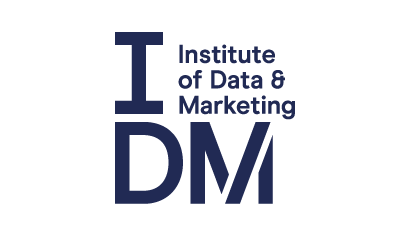Combining social with other data sources
As well as the platform analytics themselves, you can gain some useful insights from other tools within your marketing stack that will build a richer picture of your social media ROI.
Website analytics
Mapping your website analytics to social activity can generate valuable insights about your customers. You can start to evaluate which channels and content drive the most value for your business. This data will also tell you how different consumers respond to your social output and how they then behave when navigating your website.
In Google Analytics, much of this evaluation will rely on the setting up of goals i.e. certain pages or actions on the site that represent a financial value to the business, such as the sale of a product. In such instances, this sale would end in completion or ‘Thank You’ page, the visiting of which would trigger a goal in analytics.
Based on the existence of such goals, you can start to combine dimensions in your reports in the following ways to gain insights:
Source/ Goal value
This tells you the average value of users from different sources. For instance, are Twitter users creating more revenue than Facebook users? And how much does it cost to acquire each one?
Content/ Goal value
These dimensions will show what commercial value specific pieces of social media content present to the business.
Source/ Goal conversion rate
Shows the true propensity of visitors from different social platforms to perform valuable actions on your site. You may, for instance, find that whilst Facebook visitors are more frequent, Instagram visitors are more likely to convert.
In addition to gaining insight into your social media audience visiting your website, you can use data on how people find and navigate your site to inform social content strategy.
There are many ways this could happen, but here are some examples:
Approach 1: Top content
By looking at the most viewed pages – and products – on your site you can start to determine which aspects of your brand’s offering people are most interested in.
Approach 2: Site searches
By querying your top content with a “search=” or “s=” query (depending on how your search results page URLs are formatted) you can see what searches visitors are making on your site and identify some informational needs of your audience to better serve through social content.
Approach 3: Bounce rate and exit pages
Where do people tend to wander off your site? Identifying these less compelling aspects of your communications could help to improve social media output.
Approach 4: Search engine enquiries
Gained through Google Search Console, insight into which queries you rank for, and which ones generate traffic can be an invaluable source of the informational needs you could meet in social.
Approach 5: Referrals
Knowing which other websites, blogs and articles are linking to you will offer a better understanding of your audience and their online consumption habits so that you can cater to them more relevantly in social.
Email marketing platform
Results from your email marketing efforts should be shared with your social content team – and vice versa.

In many cases email is a more direct channel for brands, offering unfiltered access to people who have engaged or shown interest previously. There is little intervention from algorithms or competition with advertising allowing email content to be seen by many, and not just by the most engaged users (as with social). So given this scale, data points can be statistically relevant, even for small brands.
Ensure that you take this data and analyse what email subject lines work (generate highest open rates), and how you could work elements of the most successful ones into your social media copy. Investigate which stories or products recipients click on – and which ones they don’t – to add an additional layer of understanding about the content that resonates with your most engaged fans.
Customer service
Your interactions with customers in a customer service platform such as Zendesk or LiveAgent can reveal insights into further informational needs of your audience.

Perform regular (at least monthly) reviews of queries to discover the most frequent questions. Whilst these can feed into an FAQ page on your website, you can reach more of your audience and customers by proactively creating content about these things.
Feed into your Help content each month with these proactive pieces. These will, primarily, be published as organic social media posts, not supported with ad budget, as they are targeted at your existing audience. When measuring their ROI take into account that their purpose is not necessarily to drive mass reach or high engagement. It is to better inform your audience and put your commitment to customer care on public display.
Advertising platforms
As with the above channels, if your brand utilises PPC platforms such as Google, Facebook, Instagram, WhatsApp, LinkedIn, Twitter and the like you may well be experimenting with a wider variety of approaches and styles in regards to brand imagery and copy.
Explore the results from these campaigns, and whilst you will rightly want to avoid transplanting heavily sales-focused ad copy into your social posts, you will learn what themes, product features, phrasings your audience respond strongly to.
Surveys
Large organisations regularly survey customers, so ensure you are tapping into this invaluable information. It will give you insight into how your organisation, and various departments within it, is being perceived by the outside world. This can help inform your approach to messaging, content opportunities and benchmarking against the kinds of comments you receive through social channels.
Insights and research from other departments
A piece of research may have been done to form the basis of your major campaigns or new product launch. This is all valuable information to inform your strategy, any insight into your customer base is potentially valuable in improving your social media performance.
Social listening
As covered in the Social listening module these tools which allow you to run advanced searches of content on social platforms will surface many catalytic ideas for social media content.
The sorts of insights you will find here include:
- Consumer pain points and frictions – their challenges that your product or service can solve
- Concerns about your brand or offering – perceptions about you stopping them from becoming a customer
- Competitor analysis – how people perceive you vs. other companies in your space
- Customer feedback – what people are saying at various stages in their buying journey

Bringing these themes into your social media output will proactively address issues, showing consumers that you understand them, how they feel about you and your wider industry.
Join the discussion
With reference to the five approaches to collecting data about how people are using your social media sites, which approach do you think would provide the most useful information? Explain why in the comments below.Use the discussion section below and let us know your thoughts. Once you’re happy with your contribution, click the “Mark as Complete” button to check the Step off, then you can move to the next step.
Running a Social Media Campaign: Customers, Influencer Engagement, Analytics

Running a Social Media Campaign: Customers, Influencer Engagement, Analytics


Reach your personal and professional goals
Unlock access to hundreds of expert online courses and degrees from top universities and educators to gain accredited qualifications and professional CV-building certificates.
Join over 18 million learners to launch, switch or build upon your career, all at your own pace, across a wide range of topic areas.
Register to receive updates
-
Create an account to receive our newsletter, course recommendations and promotions.
Register for free







